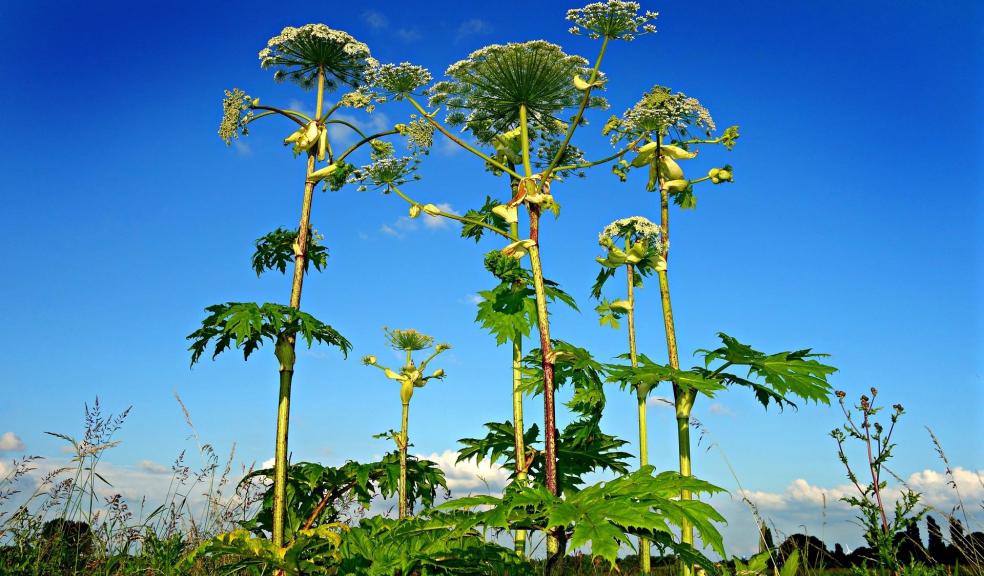
Dog Expert Explains The Dangers of Giant Hogweed After Dog Is Left With Weeping Blisters
It burns, blinds and can be in your own garden. Giant Hogweed has sadly killed dogs and blinded many people. But what is it? What does it look like and what could happen if your dog comes in contact with Giant Hogweed? A Chihuahua-pug cross was left with weeping blisters after brushing past Giant Hogweed, so the experts have weighed in to help.
Dog experts Kennel Store have advised dog owners on how to keep their pets safe when walking in wooded areas and what signs and symptoms to look out for.
"Giant hogweed is a plant that is dangerous to dogs and can have fatal consequences. It is typically found along British river banks and can reach over 10 feet in height. In terms of identifying giant hogweed, the flowers are white and form clusters, with all the flowers facing upwards.
Giant hogweed is dangerous to both dogs and humans, as the sap can cause burns after coming into contact with skin. Giant hogweed can cause a whole host of problems for dogs, many of which can be difficult to spot immediately. If your dog comes into contact with the plant via their eyes, this can lead to blindness. Your dog can also come out in huge blisters that can take months to heal and could leave dark scarring, which could last years.
In some cases, when giant hogweed touches your dog it can cause a disorder called phytophotodermatitis. This leads to severe photosensitivity to sunlight. Giant hogweed poisoning can be hard to see, but when exposed to direct sunlight the rashes that can present from direct contact are much more visible.
In the initial stages of Giant hogweed poisoning, the skin will be itchy and red, which will progress to more severe symptoms within 12 hours. The symptoms of poisoning in dogs are:
- Redness and itching
- Black scars that can last for years
- Photosensitization (ulcerative and exudative dermatitis)
- Blindness (bumping into things, falling)
- Blistering rash that is extremely painful within two days
- Light sensitivity in skin that is affected (this could last for years)
Giant hogweed contains a toxin called furanocoumarins, which is what causes severe phytophotodermatitis. Whilst it's advisable to keep dogs away from the plant entirely where possible, the stems and foliage are the areas that have the highest concentration.
Diagnosing giant hogweed poisoning
If you suspect your dog has been poisoned by giant hogweed, it's vital they are taken to see a vet as soon as possible. Looking at the symptoms your dog is presenting with, your vet may take a biopsy of the affected area to test the skin. This allows the vet to look at the skin sample under a microscope and see the damaged cells.
A physical examination will likely take place, which involves monitoring your dog's body temperature, blood pressure, weight, reflexes, breathing, and overall coat.
Treatment for giant hogweed poisoning in dogs
Your vet may apply a steroid cream to help treat the skin and ease any pain or inflammation that may occur. A bandage may also be applied to help shield the area from bacteria and to keep the area - preventing additional infection. This could result in your dog being given an Elizabethan collar (a cone) which stops them from licking the affected area or pulling off the bandage.
Medication
Your vet will be able to decide the best course of action in terms of treatment for your dog. Be sure to raise any concerns or ask any questions with your vet as soon as possible to give your dog the best chance at making a full recovery.
Recovery From Giant Hogweed Poisoning
Once your dog’s skin has a case of phytophotodermatitis, the area will be sensitive to sunlight for many years later. This is why it is extremely important to protect your dog from sunlight and to carefully monitor the area. You can use sunscreen that is specially made for dogs and provide plenty of shade when they are outside. It’s best to avoid the hottest parts of the day where possible. If not, the phytophotodermatitis can return, and leave permanent scarring.
We advise all dog owners to remain vigilant and keep a close eye on their pets. If your dog begins showing signs or symptoms of Giant hogweed poisoning, take them to a vet immediately and seek treatment as soon as possible."







